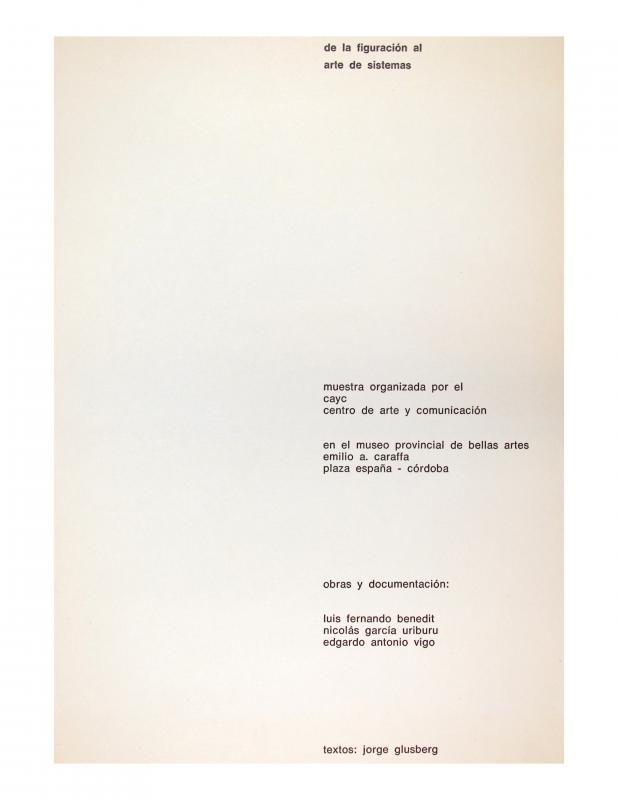Ever since it was founded, the CAYC (Centro de Arte y Comunicación), helmed by the cultural promoter, artist, and businessman Jorge Glusberg, was intended as an interdisciplinary space where an experimental art movement could flourish. The establishment of collaborative networks connecting local and international artists and critics played a key role in this process. The exhibitions shone a light on these exchanges, in which overviews of trends or individual artists introduced the innovations of international contemporary art and made Argentine and Latin American artists better known on the global scene.
During the run of De la Figuración al Arte de Sistemas (the exhibition presented at the Museo Emilio Caraffa in Córdoba, 1970) (doc. no. 761141), Glusberg introduced the category of “arte de sistemas” to refer to the practices of artists associated with the CAYC. In his opinion, this art “is more about processes than the finished products of good art” (exh. cat. for De la Figuración al Arte de Sistemas).
When artists and intellectuals refused to take part in the XI Bienal de São Paulo (September to November 1971) as a way of denouncing the increasing censorship and suppression being deployed by the Brazilian military dictatorship (1964–85), Glusberg decided that, instead of taking his exhibition to Brazil, he would show it at the Museo de Arte Moderno de Buenos Aires (now Moderno).
Glusberg invited a cross section of local and international artists and critics to Arte de Sistemas, the exhibition that opened in July 1971 at MAMBA. Exhibitions and various activities involving some of the invited artists were organized at the CAYC premises during the same period. Among the guests at the opening event was the Chilean art critic Miguel Rojas Mix, a key figure in Chilean cultural circles, who was the director of the Instituto de Arte y Cultura Latinoamericano. IAL, in fact, was instrumental in creating the Museo de la Solidaridad, which tried to forge close ties with Latin America. The exhibition not only established so-called “systems art” within the proposed parameters by the center; it also exposed the cultural dialogue and exchange processes promoted by the CAYC. On this occasion, Chile offered glimpses of renewal at all levels and, in the 1970s, fostered the political vision of the center and its artists had developed in response to the authoritarian governments of the Southern Cone.

